Concorde Reopens to the General Public at the Intrepid Museum After 7-Month Rehab
Guided tours of the Concorde resumed for the public on April 4 at the Intrepid Air & Space Museum after the former British Airways fabled aircraft’s returned following a seven month overhaul at the Brooklyn Navy Yard. The Concorde on display is actually the one credited with making the fleet’s fastest ever trans-Atlantic journey in under three hours.
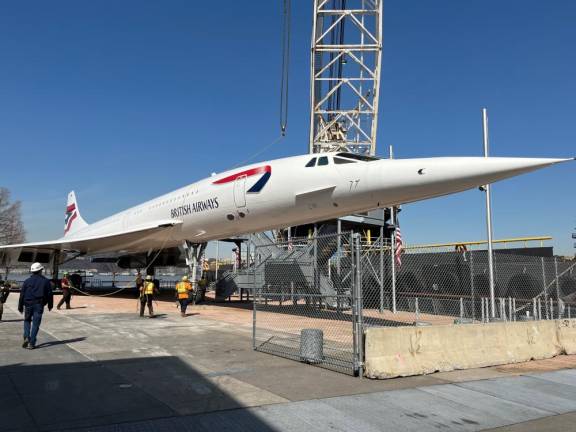
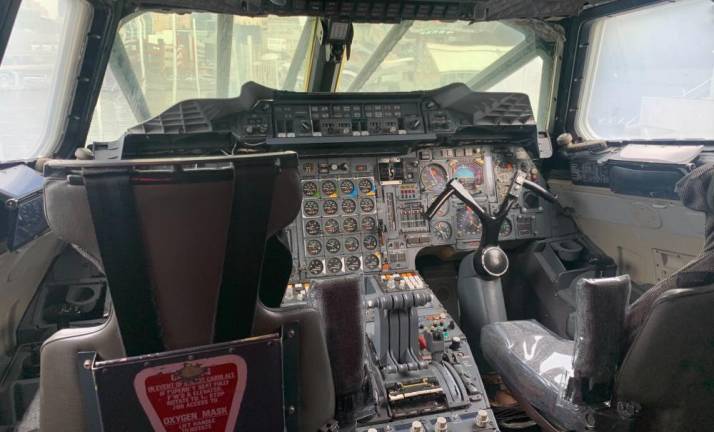
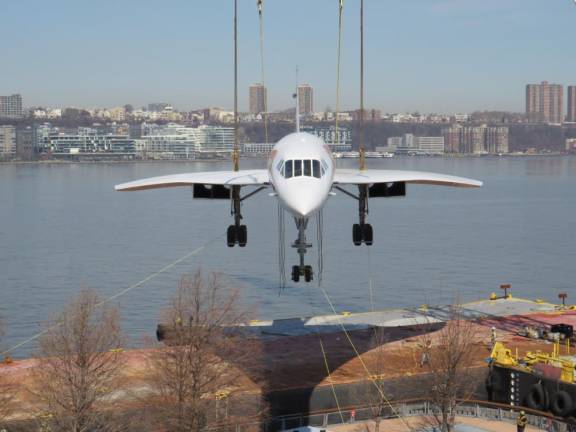
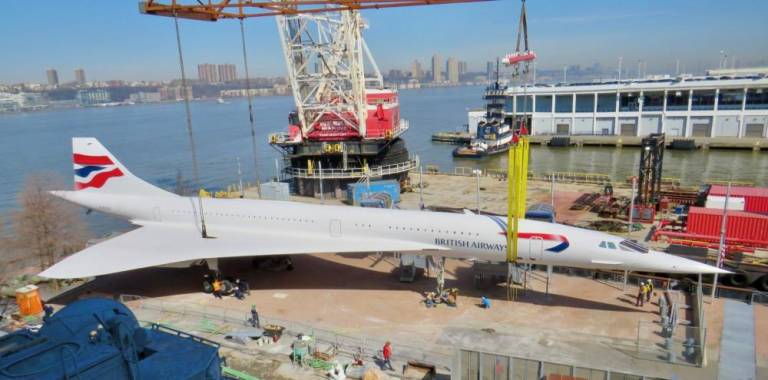
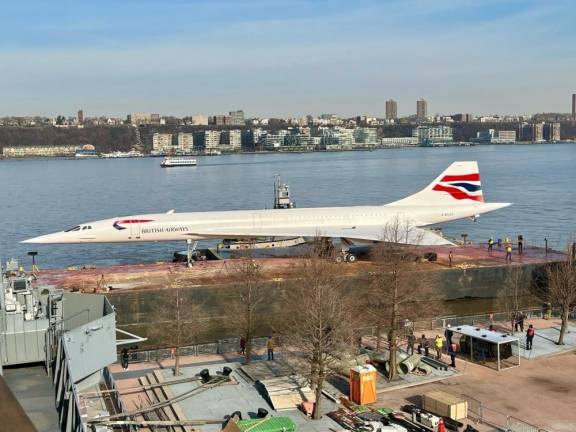
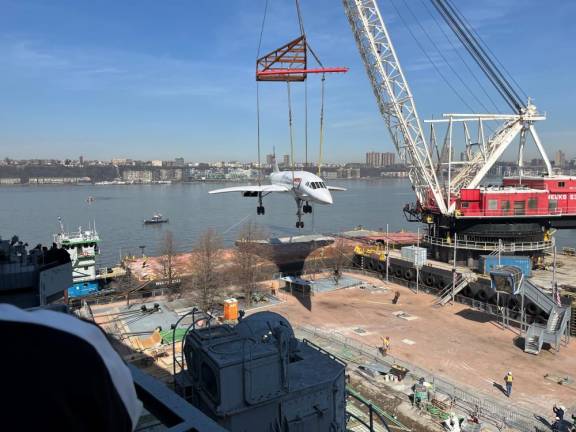
The Concorde has landed.
After a seven-month rehab, a British Airways Concorde that jetted the rich and famous to Europe in three hours, reopened to the public on April 4 following its return to Pier 86 at the Intrepid Air & Space Museum.
“I can’t wait for our visitors to see it,” Susan Marenoff-Zausner, president of the Intrepid Museum, said following a ceremony on March 14, after a mechanical ballet had positioned the 80-ton supersonic transport back on the exact same spot on Pier 86 where the record setting craft had amazed visitors for 21 years since its decommissioning. “Concorde looks simply amazing,” she said.
Unlike the days when it cruised 11 miles above the earth, the Concorde’s return trip to Pier 86 on the Hudson River in mid-March after a rehab at the Brooklyn Navy Yard was entirely by sea.
Officials from British Airways were there on March 14 to celebrate the return of the airline’s one time flagship to a permanent exhibit. “As Concorde returns to its home at the Intrepid Museum, we’re grateful to the Museum for preserving the legacy of this historic aircraft symbolizing a spirit of innovation and elegance,” said Simon Cheadle, British Airways director of flight operations,
The Concorde is open for business once again after completing its 20-mile voyage back from the Navy Yard to the Intrepid Museum at W. 46th St. and 12th Ave. on March 14.
The British Airways Concorde was a joint French-British designed and built aircraft. The fastest commercial aircraft yet constructed, it reigned supreme in the skies between Europe and the Western Hemisphere from the 1970’s to the early 2000s.
The very expensive ticket prices attracted an eclectic mix of frequent flyers–ranging from Andy Warhol and Mick Jagger to Paul McCartney and Vogue editor in chief Anna Wintour–tantalized with the needle-nosed jet’s ability to climb 11 miles above the earth while cruising at 1,300 mph.
While in service between JFK and Heathrow Airport in London from 1976 to 2003, workers at the British Airways staff at Kennedy Airport referred to the fabled aircraft simply as “The Rocket.”
By comparison, a current-era Boeing 787, traveling from New York to London cruises at 564 mph and flies about 7 ½ miles above the planet.
Concorde’s travel time from NY to London was comparable to the 225 mile trip that the Amtrak Acela takes from NY to DC now.
Out of 20 planes that were built, 18 are currently preserved all over the world, with three displayed in the United States. In addition to the one on board the Intrepid there is one in Virginia and a third in Washington State.
The one at Manhattan’s Intrepid Museum is special; it had the most flying hours of any of the 20 Concordes built, 14 of which flew for British Airways and Air France. This one made the fastest Atlantic crossing by any Concorde on February 7, 1996, taking off from New York JFK and landing in London Heathrow 2 hours, 52 minutes, and 59 seconds later—over 3,400 miles
The now 48-year old Bristol UK-built machine underwent a restoration process by construction company Thomarios, in collaboration with GMD Shipyard that involved stripping the top paint coating, prepping, and recoating with the original colors and markings that defined Concorde’s ultimate status
As a Museum visitor, you can see it from the outside and the inside. Guided tours, available for a fee in addition to Museum admission, of the historic aircraft resumed on April 4. Visitors will be able to go inside Concorde, one of three on display in the United States. Once aboard,you can sit in a real Concorde seat, hear about its history from an Intrepid Museum guide and peer into its sophisticated, largely analog-instrumented flight deck.
For further information, consult Intrepid Museum.com.